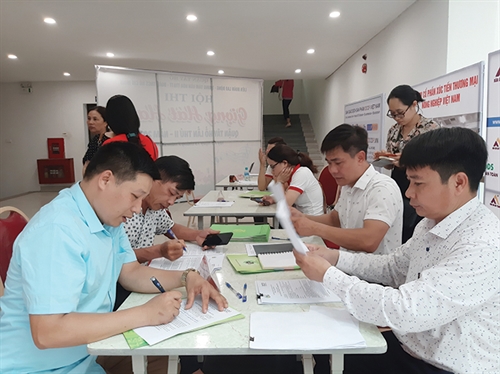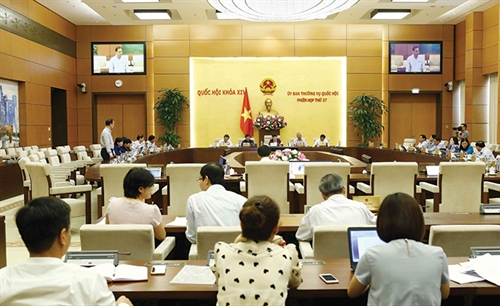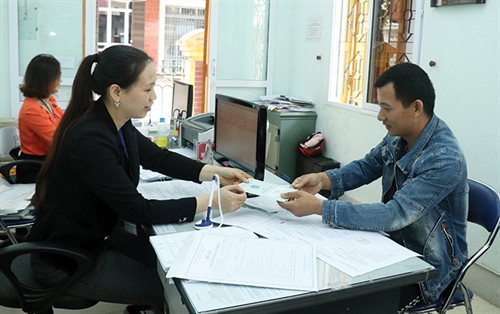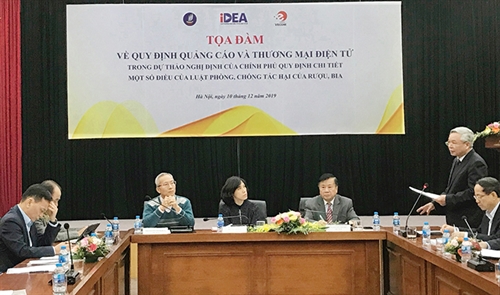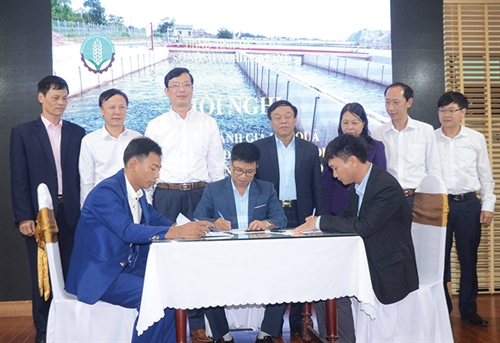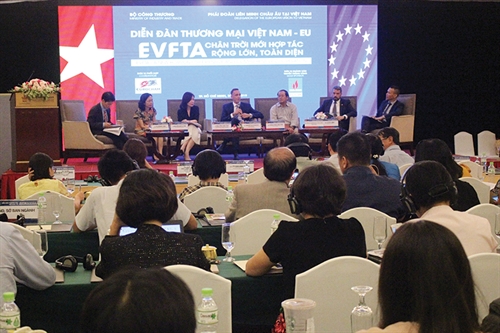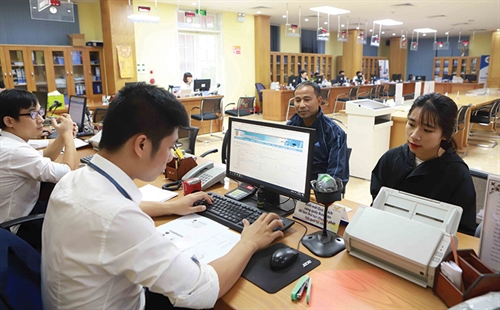Bui Phi Long
General and Legal Affairs Division
Petrolimex Insurance Joint-Stock Company
Land Law 45/2013/QH13 dated November 29, 2013 (the Land Law), defines land dispute as “a dispute involving the rights and/or obligations of land users between two or more parties in a land relationship”. When a land dispute occurs, concerned parties shall generally choose one of dispute resolution mechanisms, such as conciliation, resolution at administrative agencies, and litigation. For credit institutions, being knowledgeable about the land dispute settlement mechanisms is particularly important, especially when security assets involving land use rights become the subject of the dispute. This paper will focus on resolving land-related disputes by conciliation in terms of law and practice.
Concept and characteristics of conciliation
Conciliation is a traditional way of resolving disputes in social life. According to the Law Dictionary of the Encyclopedia Publishing House, “Conciliation is self-termination of conflicts and disputes between disputing parties by negotiation with each other or through another third party. Successful conciliation keeps the solidarity between the parties, avoids long and costly litigation as well as crimes proceeding from small conflicts”[1]. In addition, according to the Law Dictionary of the Vietnamese Ministry of Justice’s Institute of Legal Science, “Conciliation: convincing disputing parties to resolve their disputes”[2]. As per Vietnam’s law, there are two existing forms of conciliation: conciliation within judicial procedure and conciliation without judicial procedure.
“Land dispute conciliation” is a term used in land law documents. However, this term is not specifically defined in the Land Law and its enforcement documents. Nevertheless, with the Land Law’s explicit provisions on land dispute resolution, it can be described that land dispute conciliation is a method of settlement of land disputes. Accordingly, disputing parties may, by themselves or through intermediaries, resolve conflicts, disagreements or disputes in accordance with law and customs and local characteristics.
Conciliation of land disputes is a flexible and effective settlement that helps disputing parties find a suitable solution to their conflicts and disagreements. Under the Land Law, notwithstanding disputes are among individuals, enterprises or organizations, whenever a land dispute arises, it is obligatory for all disputing parties to firstly resolve by conciliation.
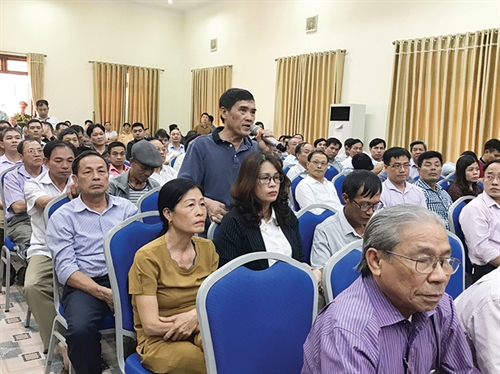 |
| Pham Duc Hinh, a resident of Hanoi’s Dong Tam commune, addresses at a dialogue between people of Dong Tam commune and officers from the Government Inspectorate__Photo: Nguyen Van Canh/VNA |
Conciliation methods and procedures
The first method of conciliation that shall be carried out by disputing parties is self-conciliation. This method does not require the interference of the State or a third party. In contrast, it brings internalities in resolution, with the purpose of helping disputing parties reach a suitable agreement.
In addition to self-conciliation, the Land Law also allows parties to resolve their land disputes by conciliation at the grassroots level. The responsibility of grassroots conciliation teams in land disputes is to persuade disputing parties and clearly analyze problematic issues so that the parties can reach an agreement in accordance with law, social ethics and local customs.
Another method is conciliation at People’s Committees of communes where the land is situated. This is one of the two methods that this paper will focus on.
Land disputes which disputing parties are not able to resolve by self-conciliation shall be referred to People’s Committees of communes where the land is situated for reconciliation.
Under the Land Law, when resolving land disputes, conciliation at commune-level People’s Committees is a compulsory procedure. In principle, all land disputes must be reconciled at commune-level People’s Committees regardless of whether the disputing entities are individuals, organizations or enterprises (Article 203). The procedures for reconciling a land dispute at a commune-level People’s Committee are stipulated in Article 88 of Government Decree 43/2014/ND-CP, detailing a number of articles of the Land Law (revised in 2017), including the following steps:
- Step 1: Verifying and investigating the reason which gives rise to the dispute, and collecting relevant documents and materials provided by the parties on the source of the land, land use history and current land use status;
- Step 2: Establishing a council for land dispute conciliation to carry out conciliation;
- Step 3: Organizing a conciliation meeting with the participation of the disputing parties, members of the council for land dispute conciliation and parties with related interests and obligations;
- Step 4: Making conciliation minutes; and,
- Step 5: Carrying out results of the conciliation.
In case of successful conciliation, the commune-level People’s Committee has to make a minutes of results of successful conciliation. Such a minutes must bear signatures of the conciliation council’s chairperson, the disputing parties present at the conciliation meeting and parties that participate in the conciliation, and the commune-level People’s Committee’s seal, and be promptly sent to the disputing parties and archived at the commune-level People’s Committee.
In case of unsuccessful conciliation, the commune-level People’s Committee is obliged to make a minutes of unsuccessful conciliation and guide the disputing parties in filing their claims to higher-level authorities competent to resolve land disputes specified in Article 203 of the Land Law. For a land dispute over land-attached assets in which a disputing party has a certificate of land use rights and house and land-attached asset ownership or one of the documents specified in Article 100 of the Land Law, the disputing parties may initiate a legal action at a people’s court or file their claims to a higher-level People’s Committee, or initiate a legal action at a people’s court in accordance with the 2015 Civil Procedure Code if they have no land use rights certificate or none of the documents specified in Article 100 of the Land Law.
It should be noted that the validity of minutes of successful conciliation for land disputes at commune-level People’s Committees is not compulsively enforceable. Conciliation minutes made by commune-level People’s Committees are not on the list of enforceable judgments and rulings or awards specified in Article 2 of Law 26/2008/QH12 on Enforcement of Civil Judgments dated November 14, 2008 (revised in 2014 and 2018).
As mentioned above, in principle all land disputes must be reconciled at commune-level People’s Committees before being resolved by other authorities which may be district-level People’s Committees or provincial-level People Committees or people’s courts. However, it is stipulated in Article 3.2 of the Supreme People’s Court’s Judicial Council’s Resolution 04/2017/NQ-HDTP that “For a dispute over identification of the land user, without conciliation at the People’s Committee of the commune where the land is situated under Article 202 of the 2013 Land Law, it shall be determined that conditions for initiating a legal action at a competent people’s court prescribed in Article 192.1.b of the Civil Procedure Code are not fully satisfied. With respect to disputes related to land use rights such as those over transactions related to land use rights, inheritance of land use rights, division of common property of husband and wife as land use rights, etc., the procedure for conciliation at People’s Committees of communes where the land is situated is not a condition for initiating a legal action at a competent people’s court”. As such, the court may accept the litigation even if the land use rights-related dispute has not yet been reconciled at the commune-level People’s Committee. The aforesaid Resolution has created an exception to the provisions of Article 203 of the Land Law which helps disputing parties quickly resolve their disputes.
Not only land disputes but also all other types of disputes are required by law to be reconciled at people’s courts before being brought up for trial. Besides, even if the conciliation process at court is unsuccessful, disputing parties may still reconcile at the first-instance or appellate trial. The procedures for reconciling land disputes as well as other disputes at people’s courts are carried out with the following steps:
- Step 1: Summoning the disputing parties;
- Step 2: Organizing the conciliation; and,
- Step 3: Processing conciliation results.
Article 213.1 of the Civil Procedure Code stipulates that “The ruling acknowledging the agreement of the disputing parties reached after a successful conciliation takes legal effect immediately after it is made and may not be appealed or protested against in accordance with the appellate procedures”. It can be inferred from this Article that once the judge has made a ruling on successful conciliation, such ruling shall immediately take effect to the disputing parties. Moreover, such a ruling may only be protested against in accordance with the procedures for judicial review if there are grounds to believe that disputing parties’ agreement has been made by mistake or deception, under threat or force, or is in violation of regulations on prohibitions or contrary to social morality[3]. This is one of the major differences between conciliation at commune-level People’s Committees and conciliation at people’s courts.
Advantages and disadvantages of conciliation
Regarding advantages of the conciliation process, in reality, conciliation of land disputes is a flexible, convenient and low-cost settlement that allows disputing parties to reach suitable agreement and help them willingly resolve their disputes.
Outstanding advantages of the conciliation of land disputes at commune-level People’s Committees are flexibility of procedures and amicability among disputing parties. Members of a land dispute conciliation council generally include prestigious people in the locality. Regarding conciliation results, according to the statistics of Hanoi, in the 2014-18 period, the total number of disputes that need to be reconciled in the whole city was 42,642 including 34,295 cases of successful conciliation, accounting for 82 percent. The rate of successful conciliation for land disputes was some 42 percent. Many districts achieved a successful conciliation rate of over 85 percent, such as Dong Da, Long Bien, Hoan Kiem, Bac Tu Liem and Thanh Oai.[4]
For the conciliation at people’s courts, it is obvious that once disputing parties come up to a successful conciliation minutes, their dispute shall almost be over. This not only helps disputing parties prevent inconvenience and expense in dispute resolution but also reduces the workload of courts, in accordance with the morality and solidarity tradition of our nation.
It has been shown over the recent years that land disputes in Vietnam are becoming more and more complicated with prolonged period of time and different levels of resolution. The period of time of resolving a land dispute mostly depends on whether the court has to bring the dispute case to trial or not. Thus, if land disputes are successfully resolved through conciliation at the time of preparation for first-instance trial, the number of cases that need to be brought to the court will certainly decrease and the court can avoid being overloaded.
Apart from the advantages as mentioned above, the conciliation of land disputes also contains some unwanted elements or disadvantages.
The greatest challenge encountered by land conciliators at the commune level is that legal knowledge and conciliation skills of those participating in the conciliation work are limited and leave a lot to be desired. Besides, successful commune-level conciliation minutes are not a type of enforceable documents as mentioned above. This can be explained by the fact that legal knowledge and professional qualifications of commune-level conciliation councils are limited since these councils are not professional jurisdiction bodies and cannot be expected to resolve land disputes in a satisfactory manner and without making mistakes. Consequently, if lawmakers give more power with regard to the enforceability of such conciliation minutes, there might be consequences that may be difficult to be dealt with.
In case of land dispute conciliation at people’s courts, the main challenge is that some of judges who are responsible for resolving dispute cases do not pay enough attention to the conciliation process for they merely consider conciliation a procedural step that must be carried out before bringing such cases to trial. Consequently, results of land dispute conciliation at people’s courts may be overlooked.
With the continuous development of social life, land disputes are becoming gradually complex. Therefore, it is necessary to improve the legal framework for land dispute conciliation as well as the people’s legal awareness about this process so as to raise its effectiveness.-
